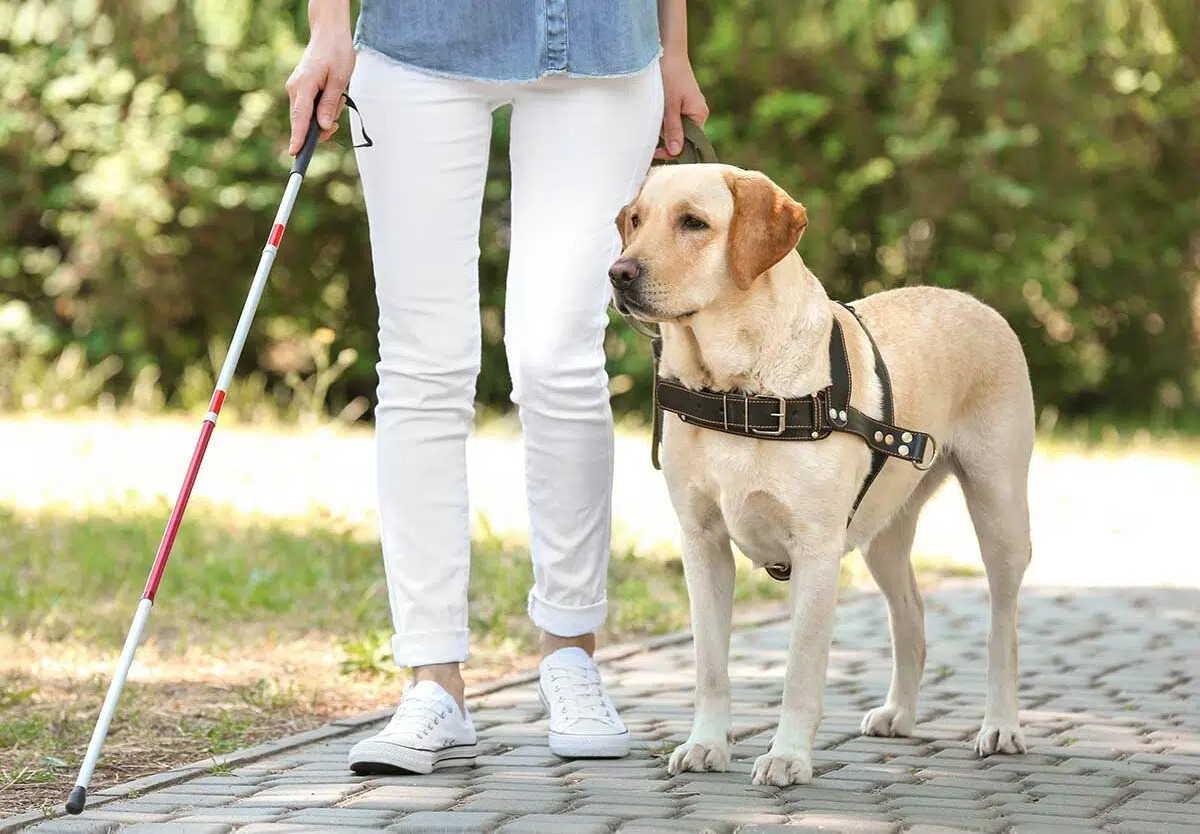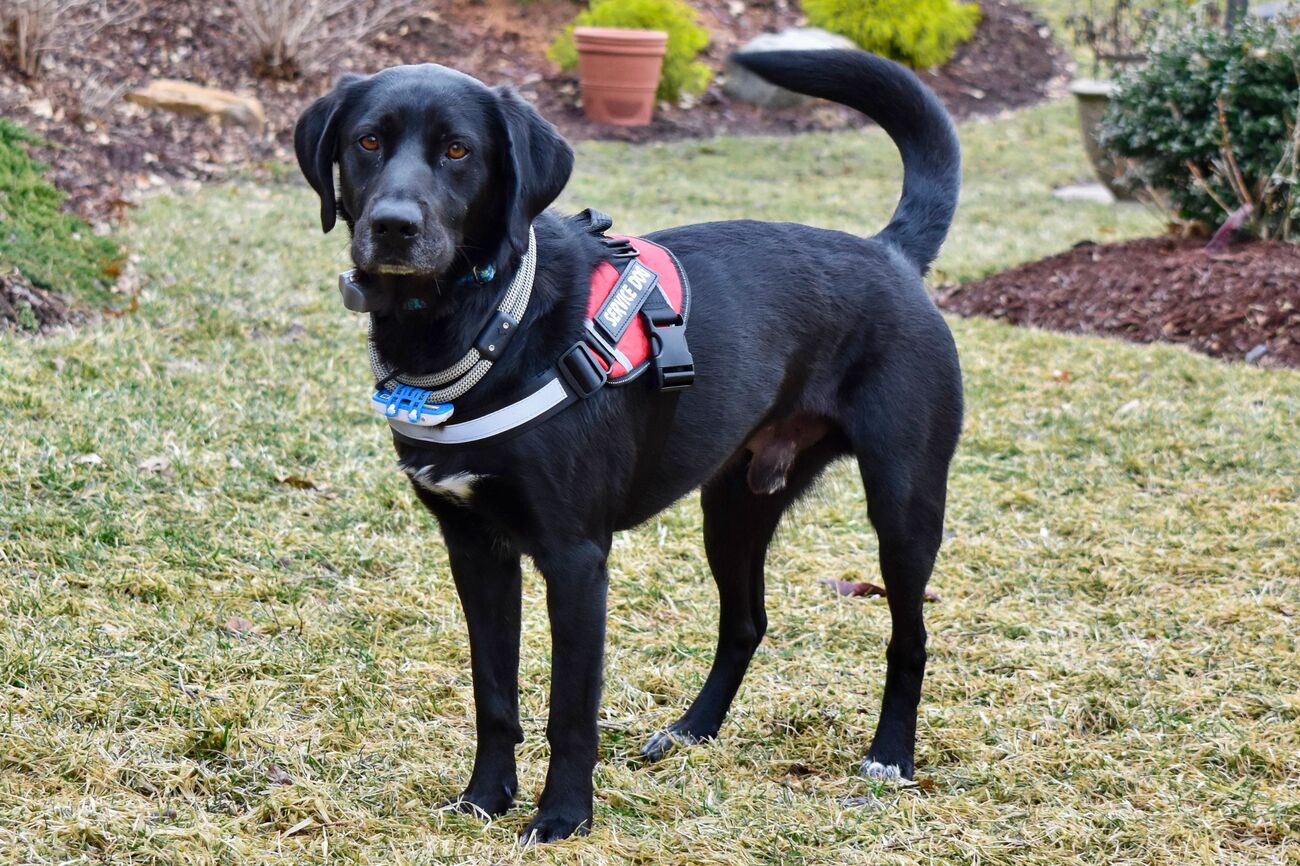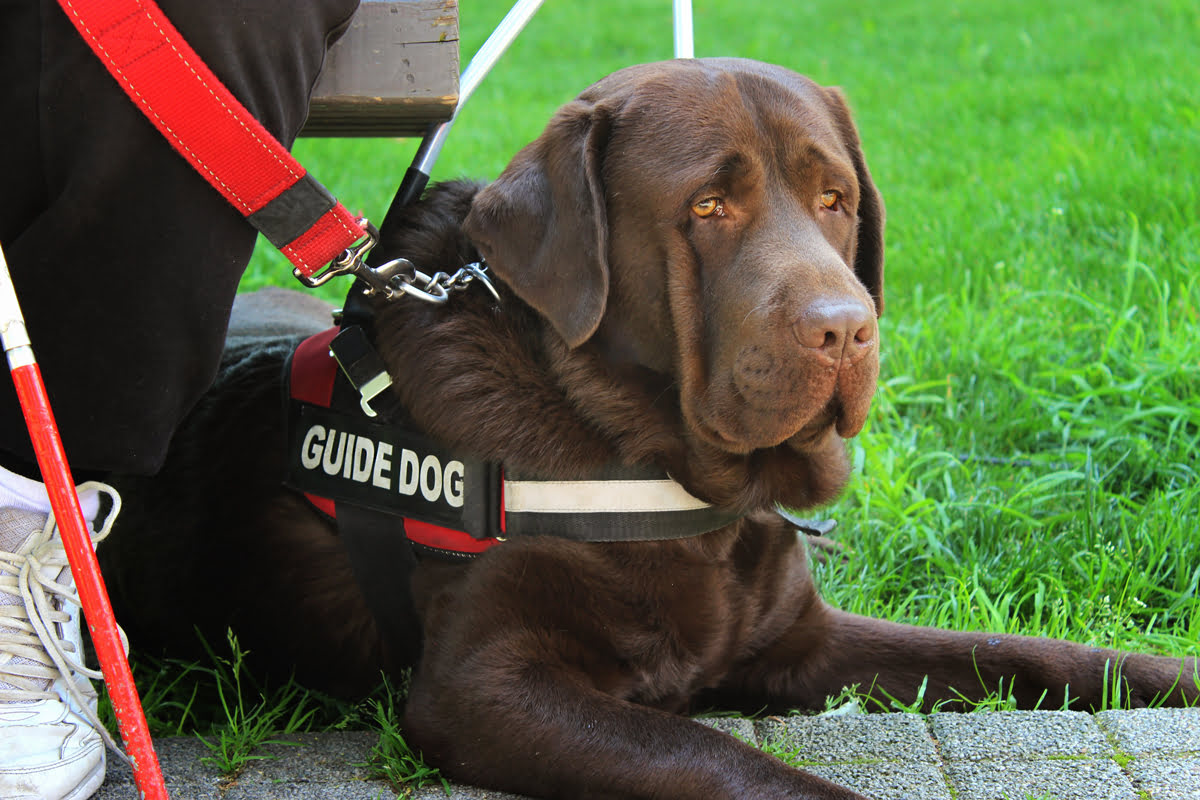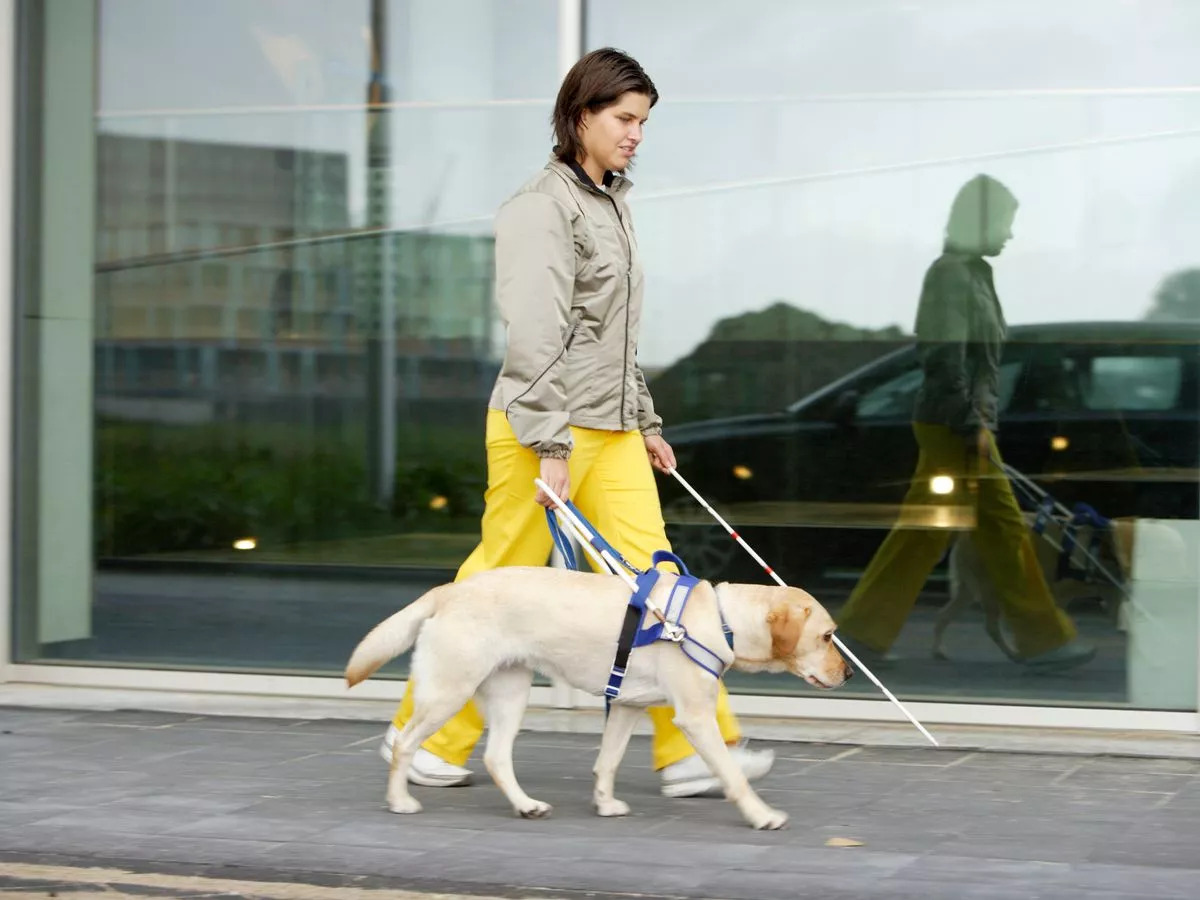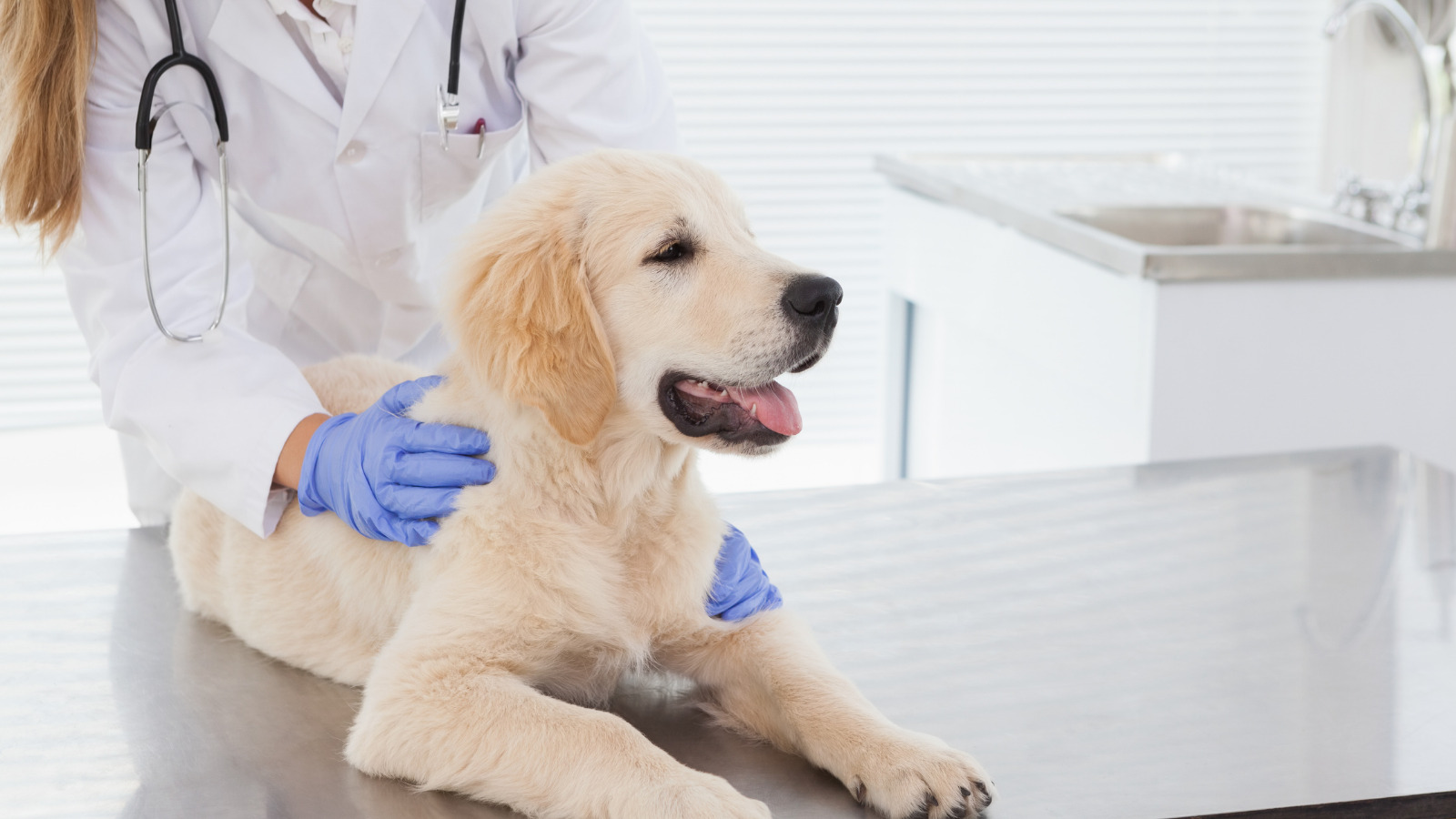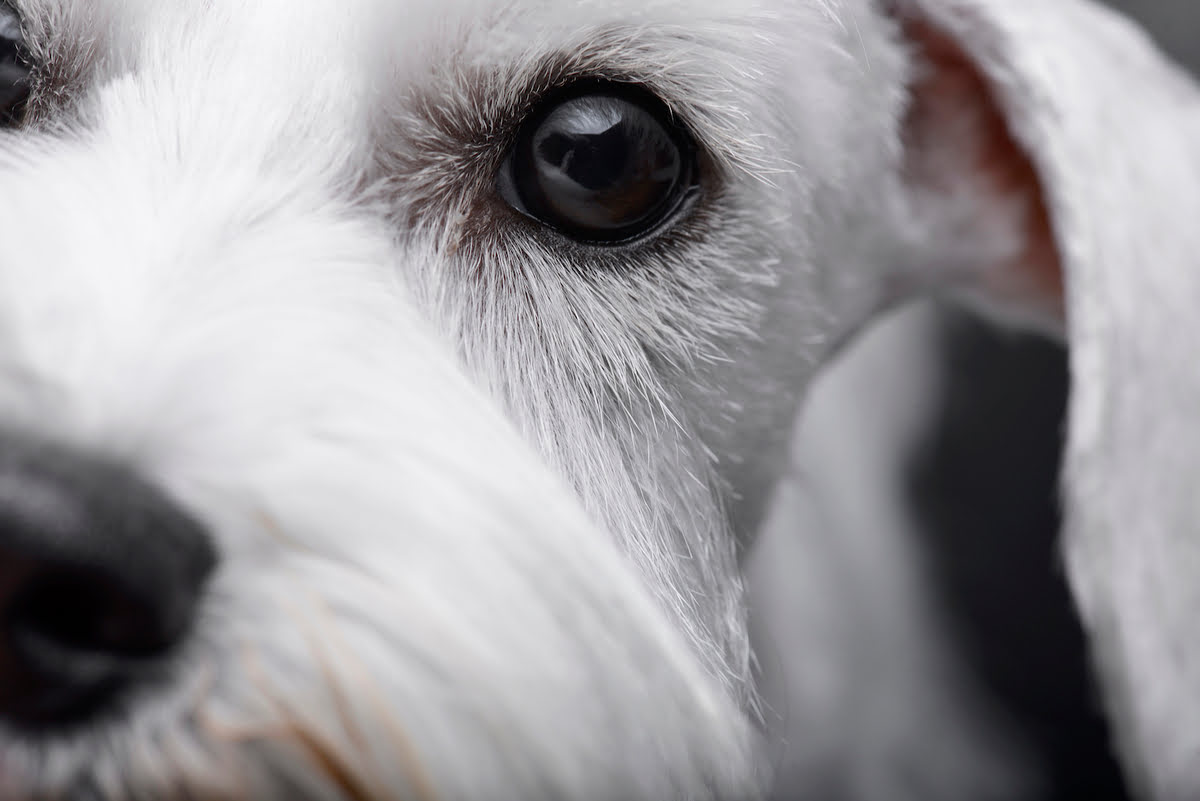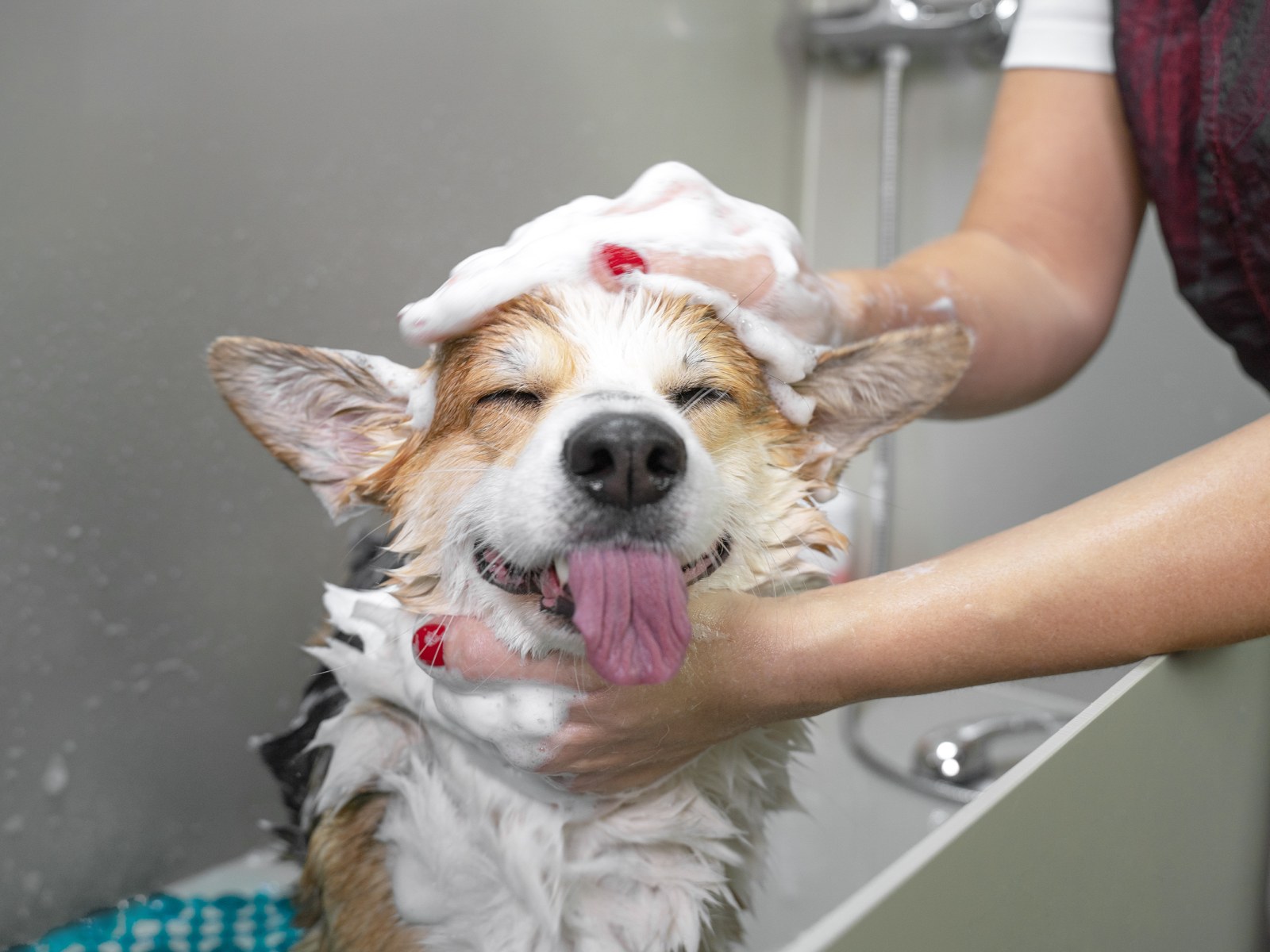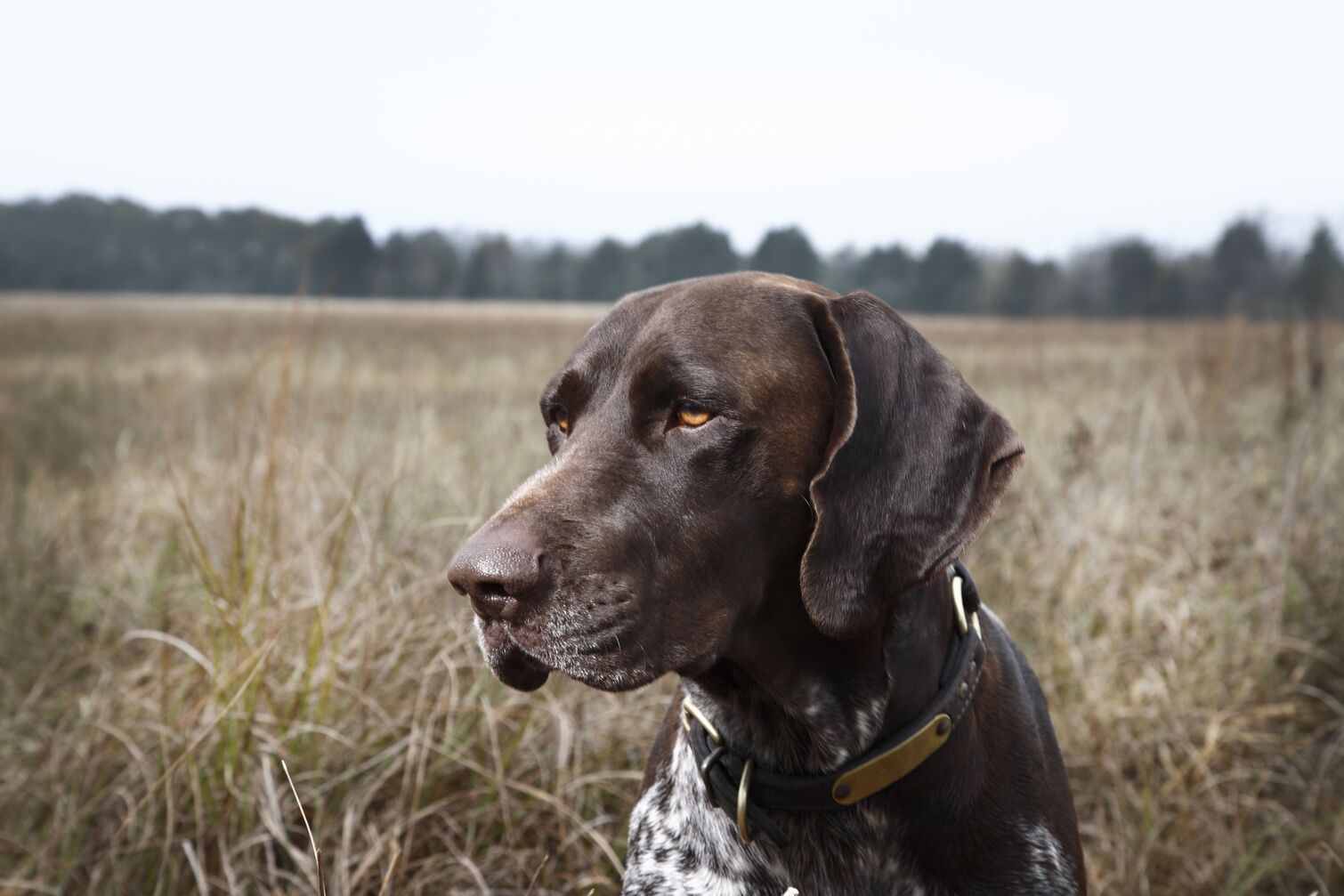Home>Health & Wellness>Common Health Issues>Eye and Ear Health>What Do Seeing-Eye Dogs Do
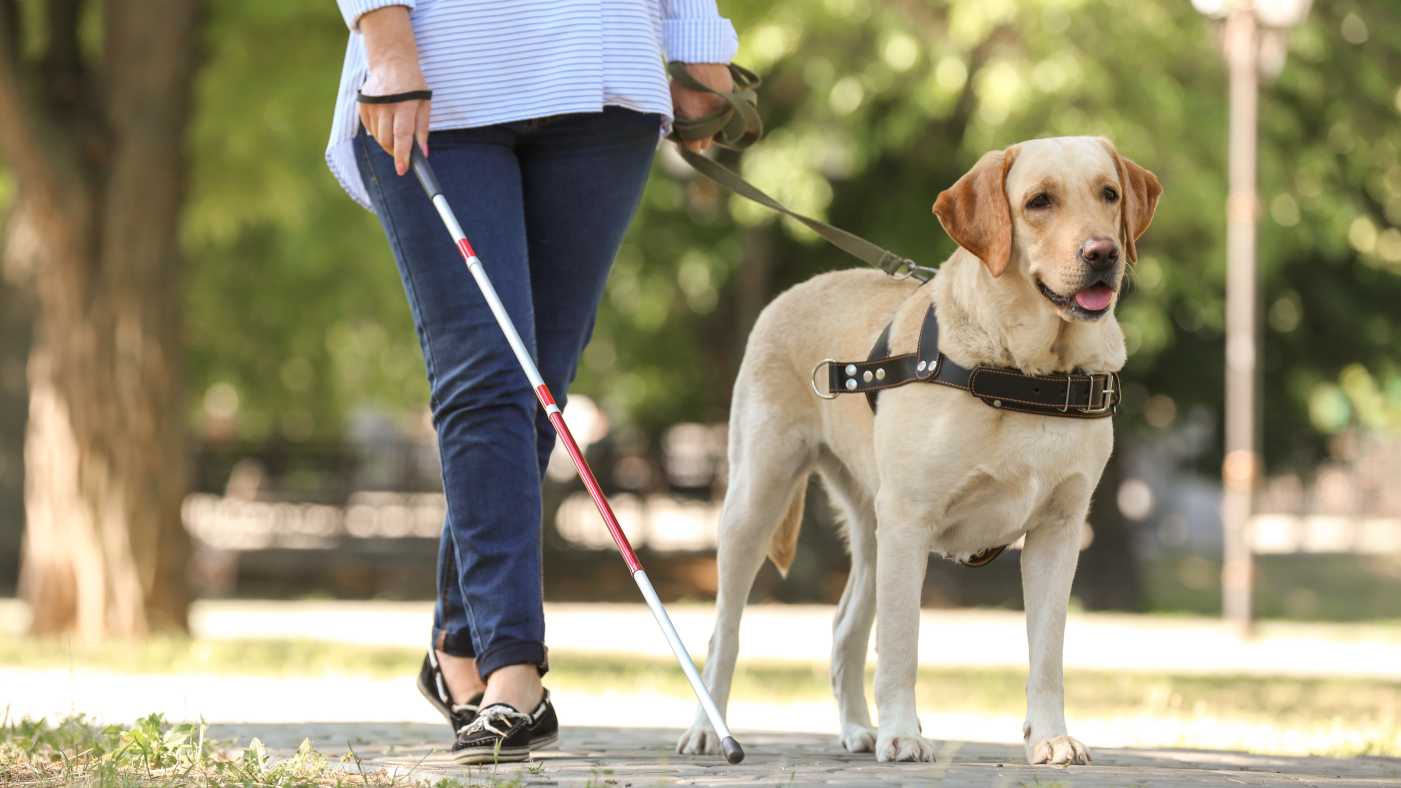

Eye and Ear Health
What Do Seeing-Eye Dogs Do
Published: February 11, 2024
Discover the vital role of seeing-eye dogs in supporting individuals with visual impairments. Learn how these amazing animals contribute to eye and ear health.
(Many of the links in this article redirect to a specific reviewed product. Your purchase of these products through affiliate links helps to generate commission for Pawsomeoldies.com, at no extra cost. Learn more)
Table of Contents
Introduction
Seeing-eye dogs, also known as guide dogs, play a crucial role in the lives of individuals with visual impairments. These remarkable canines are more than just loyal companions; they are highly trained and dedicated partners that provide invaluable assistance to their visually impaired handlers. Through their unwavering support and specialized training, seeing-eye dogs empower individuals to navigate the world with increased independence and confidence.
The bond between a seeing-eye dog and their handler is built on trust, mutual respect, and a deep understanding of each other's needs. These extraordinary dogs undergo rigorous training to develop the skills necessary to guide and protect their handlers in various environments, from bustling city streets to quiet rural areas. Their unwavering dedication and remarkable abilities make them indispensable allies for individuals with visual impairments.
As we delve into the world of seeing-eye dogs, we will explore the pivotal role they play in enhancing the quality of life for individuals with visual impairments. From their training process to the daily tasks they perform, we will uncover the profound impact these canine companions have on the lives of their handlers. Join us on this enlightening journey as we gain a deeper understanding of the remarkable bond between seeing-eye dogs and their visually impaired partners.
Read more: What Does A Dog’s Eye See
The Role of Seeing-Eye Dogs
Seeing-eye dogs, also referred to as guide dogs, serve as indispensable companions and navigators for individuals with visual impairments. These remarkable canines are meticulously trained to provide essential support, enabling their handlers to move confidently and independently through various environments. The role of seeing-eye dogs extends far beyond mere companionship; they are instrumental in enhancing the mobility, safety, and overall well-being of individuals with visual impairments.
The primary role of seeing-eye dogs is to guide their handlers through daily routines, including navigating busy streets, crossing intersections, and avoiding obstacles. These highly trained dogs exhibit exceptional skills in obstacle avoidance, intelligent disobedience, and directional commands, allowing them to safely guide their handlers through diverse and dynamic surroundings. By alerting their handlers to potential hazards and changes in elevation, such as curbs and steps, seeing-eye dogs play a pivotal role in preventing accidents and ensuring safe navigation.
Moreover, seeing-eye dogs provide emotional support and companionship, fostering a deep bond with their visually impaired handlers. This companionship extends beyond the physical assistance provided, offering a source of comfort, security, and companionship in various social and public settings. The presence of a seeing-eye dog often instills a sense of confidence and independence in individuals with visual impairments, empowering them to engage more fully in daily activities and social interactions.
In addition to their navigation and companionship roles, seeing-eye dogs serve as ambassadors for the visually impaired community, promoting awareness and understanding of visual disabilities. Their presence in public spaces helps to educate and inform the general public about the capabilities and rights of individuals with visual impairments, contributing to a more inclusive and accessible society.
The role of seeing-eye dogs is multifaceted, encompassing navigation, companionship, and advocacy. Through their unwavering dedication and specialized training, these remarkable canines significantly enhance the quality of life for individuals with visual impairments, enabling them to navigate the world with increased independence, confidence, and dignity.
Training Process
The training process for seeing-eye dogs is a meticulously structured and comprehensive journey that equips these remarkable canines with the specialized skills necessary to assist individuals with visual impairments. From the early stages of socialization to advanced obedience training, the development of a seeing-eye dog involves a carefully orchestrated series of exercises and experiences designed to cultivate their unique abilities.
The training journey begins with the selection of suitable canine candidates, typically breeds known for their intelligence, temperament, and adaptability, such as Labrador Retrievers, Golden Retrievers, and German Shepherds. These potential guide dogs undergo thorough evaluations to assess their temperament, health, and aptitude for the demanding role ahead. Once selected, the training process unfolds in a structured environment under the guidance of experienced trainers and handlers.
The initial phase of training focuses on socialization, exposing the dogs to diverse environments, sounds, and stimuli to build their confidence and adaptability. This foundational stage lays the groundwork for the dog's future role as a reliable and composed guide. Subsequent training emphasizes obedience, with a strong emphasis on responsive behavior, leash manners, and the ability to follow directional commands with precision and consistency.
As the training progresses, the dogs are introduced to specialized skills tailored to the needs of individuals with visual impairments. They learn to navigate complex urban environments, including negotiating obstacles, identifying curbs, and safely crossing intersections. Advanced training incorporates intelligent disobedience, a critical skill that enables the dog to make independent decisions to protect their handler from potential dangers, such as oncoming traffic or obstacles in their path.
The training process also encompasses the development of a strong bond between the dog and their future handler. This bond is cultivated through regular interaction, trust-building exercises, and collaborative activities that foster a deep sense of partnership and mutual understanding. The successful completion of the training process culminates in the pairing of the trained seeing-eye dog with an individual with visual impairments, marking the beginning of a transformative partnership built on trust, communication, and shared experiences.
Throughout the training process, the dedication and expertise of trainers, coupled with the innate intelligence and adaptability of the dogs, converge to produce highly skilled and reliable seeing-eye dogs. Their training journey equips them with the capabilities to serve as steadfast companions and guides, empowering individuals with visual impairments to navigate the world with enhanced independence, confidence, and freedom.
The training process for seeing-eye dogs is a testament to the remarkable collaboration between humans and canines, resulting in the development of a partnership that transcends traditional roles and enriches the lives of both handlers and their devoted canine companions.
Daily Tasks
The daily tasks performed by seeing-eye dogs encompass a wide range of essential responsibilities that contribute to the safety, independence, and well-being of their visually impaired handlers. These remarkable canines demonstrate their exceptional training and unwavering dedication through a myriad of daily tasks that facilitate seamless navigation and enhance the overall quality of life for individuals with visual impairments.
One of the primary daily tasks of a seeing-eye dog is guiding their handler through various environments, including busy streets, crowded spaces, and indoor settings. With remarkable precision and attentiveness, these dogs navigate complex pathways, utilizing their keen senses to identify obstacles, curbs, and changes in elevation. Their ability to maintain a steady and safe pace while avoiding potential hazards is instrumental in ensuring the smooth and secure movement of their handlers in diverse surroundings.
In addition to guiding, seeing-eye dogs excel in obstacle avoidance, alerting their handlers to potential obstructions, overhanging obstacles, and other hazards that may pose a risk during navigation. Their acute awareness and proactive response to environmental cues enable them to provide timely warnings, allowing their handlers to navigate challenging terrains with confidence and peace of mind.
Furthermore, seeing-eye dogs exhibit exemplary skills in intelligent disobedience, a critical task that involves making independent decisions to protect their handlers from potential dangers. This includes the ability to disobey commands that may lead to harm, such as crossing a street when it is unsafe to do so. Through intelligent disobedience, these dogs serve as vigilant guardians, employing their judgment and training to prioritize the safety of their handlers above all else.
Beyond navigation and hazard detection, seeing-eye dogs assist their handlers in locating specific destinations, such as doorways, staircases, and designated landmarks. Their keen sense of spatial awareness and ability to follow directional commands with precision enable them to guide their handlers to desired locations with remarkable accuracy and efficiency.
Moreover, these devoted canines provide emotional support and companionship throughout the day, offering a source of comfort, reassurance, and camaraderie to their visually impaired handlers. Their presence fosters a sense of connection and security, enhancing the overall well-being and confidence of individuals as they engage in daily activities and social interactions.
The daily tasks performed by seeing-eye dogs exemplify their unwavering commitment to serving as reliable guides, companions, and protectors for individuals with visual impairments. Through their exceptional training and innate abilities, these remarkable canines enrich the lives of their handlers, empowering them to navigate the world with increased independence, confidence, and dignity.
Benefits for the Blind
The presence of seeing-eye dogs in the lives of individuals with visual impairments yields a multitude of profound benefits that extend far beyond mere assistance with navigation. These remarkable canines serve as steadfast companions, guardians, and sources of empowerment, enriching the lives of their visually impaired handlers in numerous ways.
One of the primary benefits of having a seeing-eye dog is the enhanced mobility and independence it affords individuals with visual impairments. By providing reliable guidance, obstacle detection, and intelligent disobedience, these dogs empower their handlers to navigate diverse environments with increased confidence and freedom. The ability to move independently and safely through bustling streets, crowded spaces, and unfamiliar surroundings fosters a profound sense of autonomy and self-reliance, enabling individuals to engage more fully in daily activities and social interactions.
Furthermore, the presence of a seeing-eye dog offers emotional support and companionship, mitigating feelings of isolation and enhancing the overall well-being of individuals with visual impairments. The bond between a visually impaired individual and their guide dog transcends the realm of practical assistance, evolving into a deep and meaningful partnership built on trust, understanding, and mutual reliance. This companionship provides a source of comfort, security, and camaraderie, alleviating feelings of loneliness and fostering a sense of connection and belonging.
In addition to facilitating physical mobility and emotional support, seeing-eye dogs contribute to the safety and security of individuals with visual impairments. Their vigilant awareness of potential hazards, intelligent disobedience, and proactive guidance serve as protective measures, reducing the risk of accidents and ensuring the well-being of their handlers in various environments. The presence of a seeing-eye dog instills a sense of reassurance and confidence, allowing individuals to navigate the world with a heightened sense of security and peace of mind.
Moreover, the public presence of seeing-eye dogs promotes awareness, understanding, and inclusivity for individuals with visual impairments. These remarkable canines serve as ambassadors, fostering greater acceptance and accessibility in public spaces while educating the community about the capabilities and rights of individuals with visual disabilities. Through their presence, seeing-eye dogs contribute to a more inclusive and empathetic society, advocating for the empowerment and equal participation of individuals with visual impairments.
The benefits of having a seeing-eye dog extend far beyond practical assistance, encompassing emotional support, independence, safety, and advocacy. Through their unwavering dedication and remarkable abilities, these extraordinary canines enrich the lives of individuals with visual impairments, empowering them to navigate the world with increased confidence, dignity, and resilience.
Read more: How To Be A Seeing-Eye Dog Foster
Conclusion
In conclusion, the profound impact of seeing-eye dogs on the lives of individuals with visual impairments is undeniable. These remarkable canines, through their unwavering dedication, specialized training, and steadfast companionship, serve as invaluable partners in enhancing the mobility, independence, and overall well-being of their visually impaired handlers. The bond between a seeing-eye dog and their handler transcends traditional roles, evolving into a transformative partnership built on trust, communication, and mutual reliance.
The multifaceted role of seeing-eye dogs encompasses navigation, companionship, emotional support, and advocacy, contributing to a more inclusive and accessible society. Their exceptional training equips them with the skills necessary to guide, protect, and empower individuals with visual impairments, enabling them to navigate diverse environments with increased confidence, freedom, and dignity.
The daily tasks performed by seeing-eye dogs exemplify their remarkable abilities and unwavering commitment to serving as reliable guides, companions, and protectors. From navigating complex urban landscapes to providing emotional support and companionship, these extraordinary canines enrich the lives of their visually impaired handlers in profound ways, fostering a sense of independence, security, and connection.
The benefits of having a seeing-eye dog extend beyond practical assistance, encompassing emotional support, independence, safety, and advocacy. The presence of these remarkable canines promotes awareness, understanding, and inclusivity for individuals with visual impairments, contributing to a more empathetic and supportive community.
In essence, seeing-eye dogs embody the epitome of dedication, loyalty, and service, exemplifying the transformative power of the human-canine bond. Through their remarkable abilities and unwavering commitment, these extraordinary canines illuminate a path of independence, empowerment, and inclusion for individuals with visual impairments, enriching their lives and the communities they navigate with unwavering grace and compassion.
